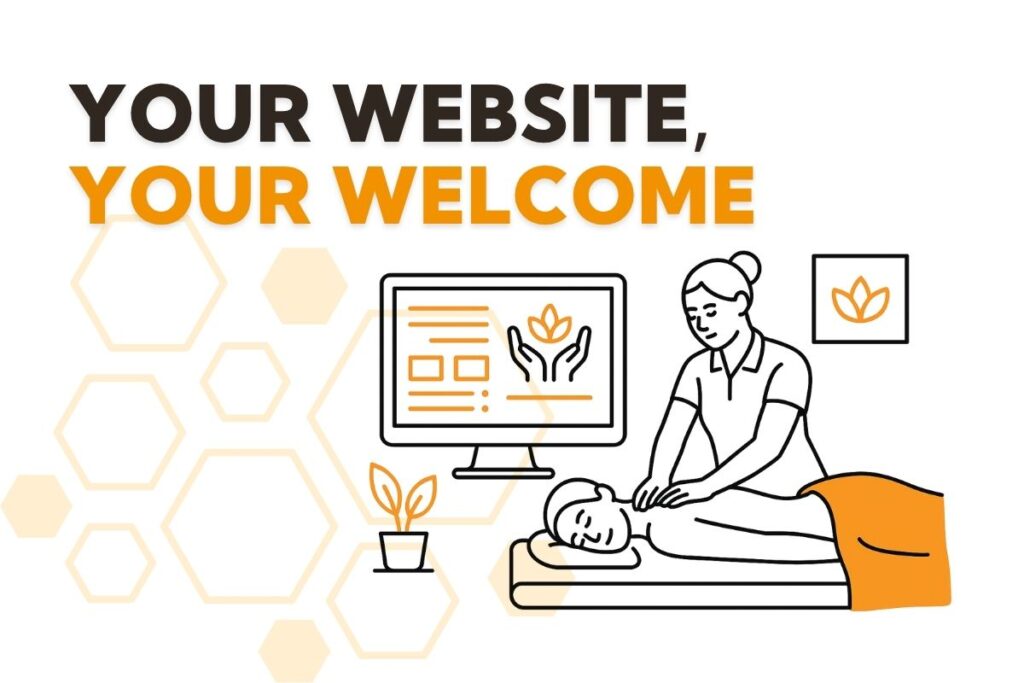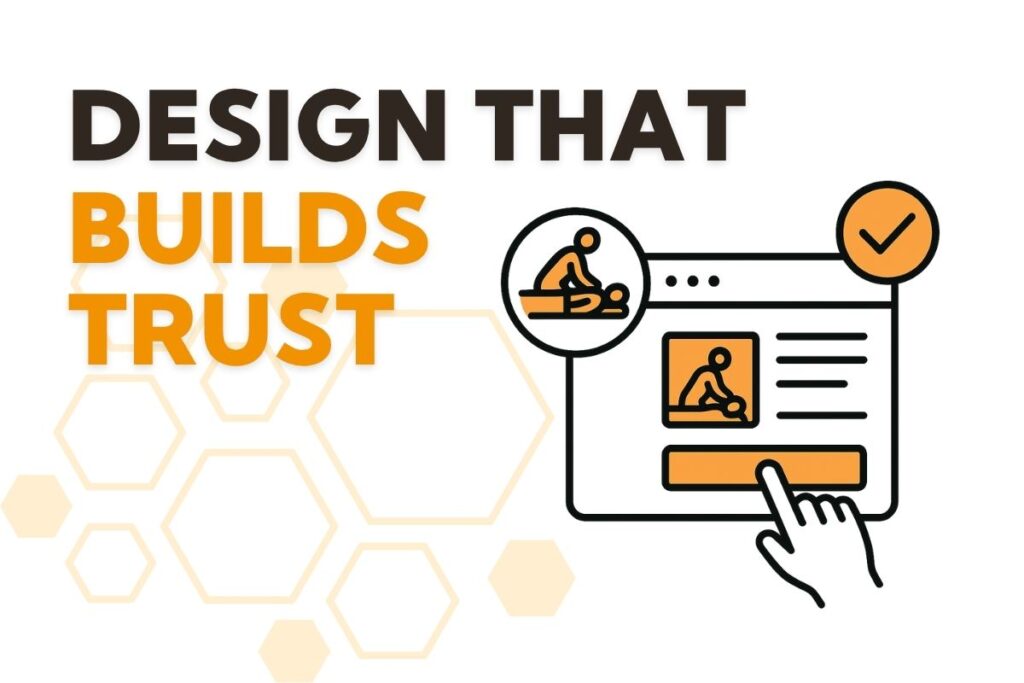Turn Clicks into Clients with a Website That Works for You
Knowing how to create a website for a massage clinic is one of the most important steps in building a thriving practice. A well-designed site attracts new clients, builds trust, and showcases the quality of care you provide. Nearly 75% of consumers judge a business’s credibility based on its website. For massage therapy clinic owners, this means your site isn’t just a digital brochure—it’s your first impression, your virtual receptionist, and often your most consistent marketing tool.
Yet many clinic websites fall short of reflecting the true care and professionalism you offer in person. If you’ve experienced low web traffic, clunky booking systems, or a site that just doesn’t feel like you, you’re not alone. This guide will show you how to create a website for a massage clinic that not only looks good but drives real results—without overwhelming you with tech.
Why Most Massage Therapy Websites Fall Short
The Disconnect Between Online and In-Person Experience
Your hands-on skills are exceptional—but if your website doesn’t reflect that, you’re missing out. Many massage therapy sites struggle because they use outdated templates, lack clear calls to action, perform poorly on mobile devices, or overlook key SEO elements. These issues don’t just look unprofessional—they break trust and make it harder for new clients to find you.
Define Your Brand and Voice Before You Design
Make Your Website Feel Like an Extension of Your Practice
Before choosing a layout or platform, take time to clarify what your brand stands for. Use calming, cohesive colors. Feature real images from your clinic. Stick to two complementary fonts for consistency. And most importantly, make sure your website’s tone mirrors the way you speak to clients—whether that’s nurturing, holistic, or results-driven.
A simple one-page brand style guide can go a long way in helping you maintain consistency as you grow.

Choose the Right Website Platform for Your Needs
Align Your Tools with Your Goals
Pick a platform that fits both your technical skill level and your clinic’s long-term needs. If you prefer simplicity, Wix and Squarespace offer drag-and-drop design with built-in features. If you want more flexibility and scalability, WordPress is a solid option.
Whichever you choose, make sure it supports features like online booking, mobile responsiveness, blog integration, and contact forms.
Design for Mobile First
Meet Your Clients Where They Are
Most clients will visit your site from a mobile device—so design with that in mind. Your site should be responsive, loading quickly and looking sharp on all screen sizes. Keep buttons large enough to tap easily, reduce unnecessary clutter, and test the layout on different devices before launching.
Integrate a Frictionless Booking System
Make Scheduling Fast and Easy
Your booking experience should be as stress-free as your treatments. Clients should be able to view real-time availability, select their therapist, pay securely, and receive confirmations—all within moments of landing on your site.
Avoid forcing clients to create an account before booking. Simplicity wins.
If you need a system that integrates smoothly and reduces admin time, explore Hivemanager’s appointment management features.
Boost Local Visibility with Smart SEO
Let New Clients Find You First
Even the best-designed website won’t drive traffic without search engine optimization. Use local keywords—like “massage therapy in [Your City]”—in your titles, headers, and descriptions. Make your contact info visible on every page, and optimize your Google Business Profile with service categories and photos.
Include descriptive alt text for every image and regularly update your blog with relevant, location-based content. For more guidance, Google’s Search Engine Optimization Starter Guide is a great place to start.
Write Service Pages That Convert
Address Real Needs with Clear, Helpful Descriptions
Service descriptions shouldn’t be placeholders—they should connect with your clients. Instead of simply listing a session and duration, explain who it’s for and what they’ll experience.
For example, rather than writing “Swedish Massage – 60 minutes of relaxation,” try: “Perfect for stress relief or first-time visitors, our 60-minute Swedish Massage helps you unwind and reset.”
When your copy speaks to a client’s situation, they’re more likely to take the next step and book.
Show Your Human Side with Testimonials and Imagery
Build Trust Through Familiarity
Authentic testimonials and welcoming imagery reassure new visitors. Display a few standout client reviews (with names and consent), include friendly team photos, or embed a short video greeting from your lead therapist or clinic owner.
These elements help prospective clients feel like they already know you before walking in the door.

Keep Branding Consistent Across All Pages
Reinforce Professionalism with Design Unity
Consistency builds trust. Whether someone lands on your homepage or a blog post, the look, feel, and tone should be the same. Use the same fonts, color palette, and header styles across every page. This attention to detail shows you care—and gives clients confidence that they’ll receive that same professionalism in their treatment.
Go Beyond the Launch: Maintain and Improve
Keep Your Site Fresh, Functional, and Focused
Launching your website is a milestone—but it’s not the end. Treat your website like your clinic: check in often, update as needed, and optimize what’s working.
Review your content monthly, test your booking system regularly, and fix any broken links or outdated information. Use analytics to understand which pages attract the most traffic, and look for opportunities to improve lower-performing areas.
Let Your Website Reflect the Care You Deliver
When you understand how to create a website for a massage clinic that mirrors the care you provide in person, it becomes a powerful tool for growth. It builds trust, simplifies bookings, and turns curious visitors into loyal clients.
Every page should reflect your values. Every image should tell your story. And every click should make it easier for someone to say yes to their first appointment. Build a site that feels like you—and let it work just as hard as you do.
Frequently Asked Questions
You can expect to spend between $300 and $1,000 depending on whether you build it yourself or hire a designer. Ongoing costs such as hosting and software usually run $20 to $50 per month.
Yes. A blog not only boosts your SEO but also builds trust with potential clients. It shows you’re knowledgeable and active in your field, which can influence booking decisions.
An intuitive, reliable booking system. If clients can’t book easily, they won’t. It’s essential that this process be fast and seamless.
Absolutely. Platforms like Wix and Squarespace are built for non-technical users. With the right guidance and attention to design basics, you can create a polished and professional site on your own.


